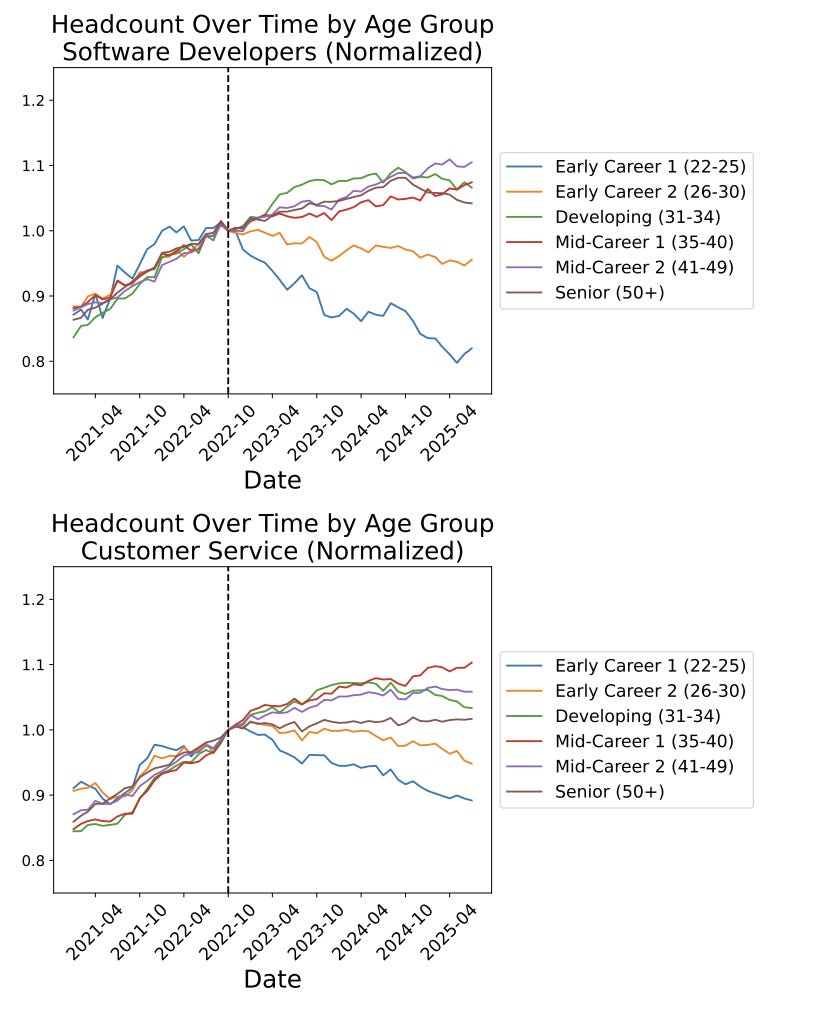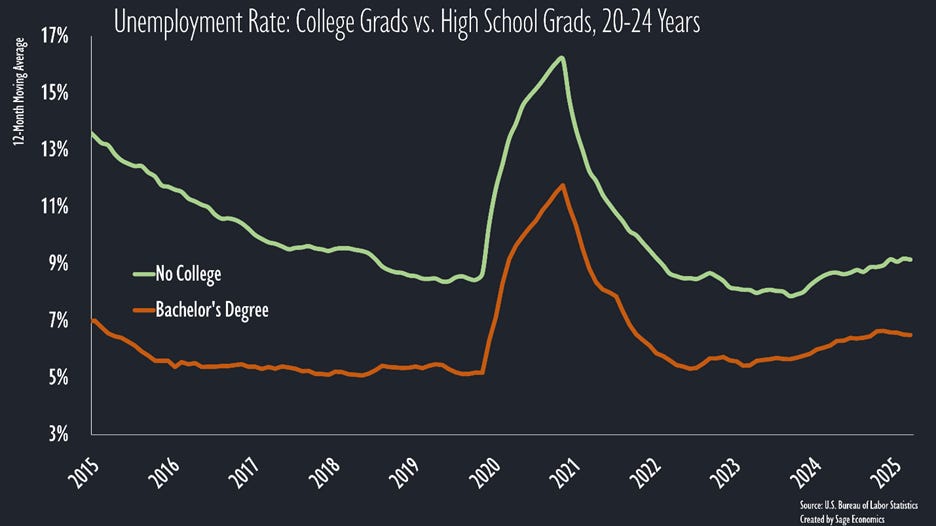AI, college grads, & labor market doom
Quick thoughts on a new paper
Is AI ruining young college graduates’ job prospects? That’s been a popular story over the past year or two, but one that—until this week—lacked the data to back it up.
A new paper from Stanford economists finds “substantial declines in employment for early-career workers in occupations most exposed to AI, such as software development and customer support.”
The upshot is that employment for young software developers and customer service workers, at least as measured by data from ADP, has plunged since late 2022.
Yes, these graphs are pretty grim, but the situation might not be as bad as it seems (at least in the aggregate; this sucks for those young graduates).
The employment declines have occurred only in jobs where AI automates work, not where it augments it, and the young workers who are still hired to do those jobs haven’t seen a reduction in compensation.
These affected fields are also a relatively small share the economy. Yes, the unemployment rate for young college grads has trended higher over the past few years, but the same is true for young people who don’t attend college, and they’re less likely to be exposed to the effects of AI.
We’ve also seen the unemployment rate for recent college grads start to dip since February, while the rate for non-college young adults continues to rise. Which is to say, AI is far from the only factor driving the labor market right now.
AI is changing—and will continue to change—the job market, and the adjustment period won’t be fun for workers who have to retrain themselves for different careers.
In the long run, however, technological innovation leads to more jobs and higher real wages. I fully expect we’ll see the same with AI.
There’s no shortage of experts who disagree with this optimist’s take. And who knows? Maybe the doomsayers are right this time. Or maybe this will be like the industrial or IT revolutions, where the predictions of mass joblessness proved laughably wrong.
What’s Next?
This week brings us updates on inflation, spending, income, saving, and more. We’ll dive into that and more in Week in Review, our every-Friday post that covers all the economic news and data in a breezy, five minute read.
Week in Review is only for paying subscribers. If that’s not you and you want it to be, just click the subscribe button.



